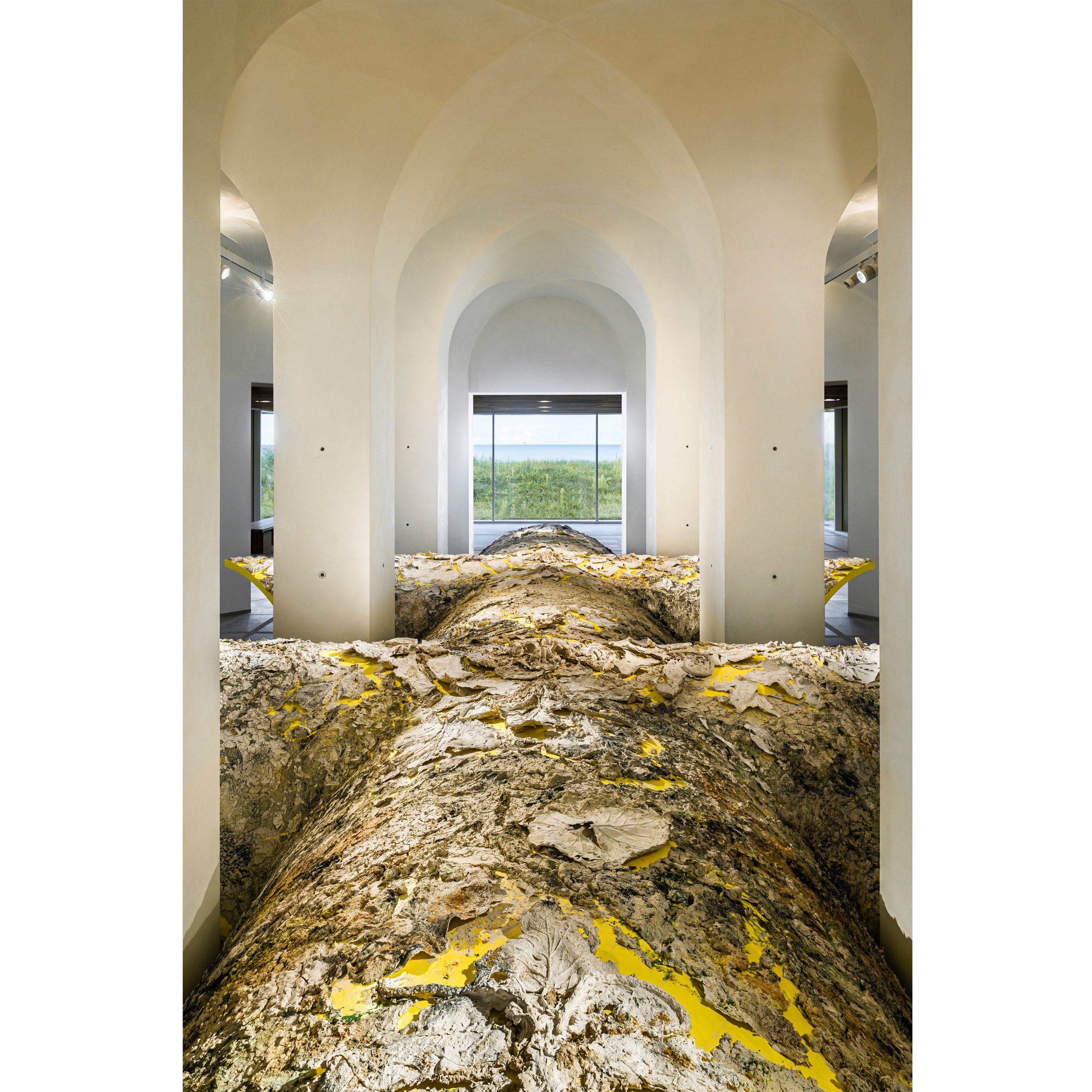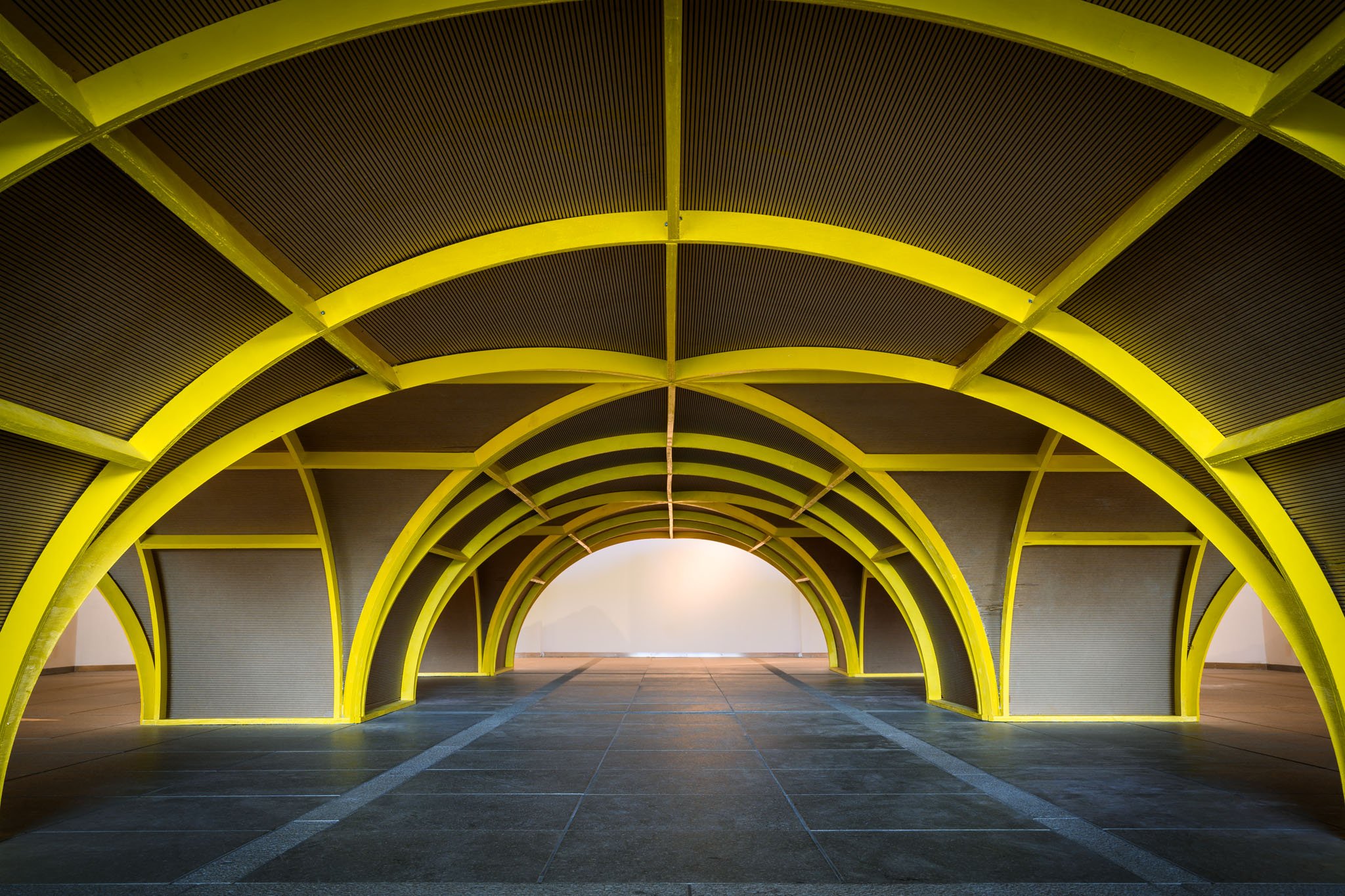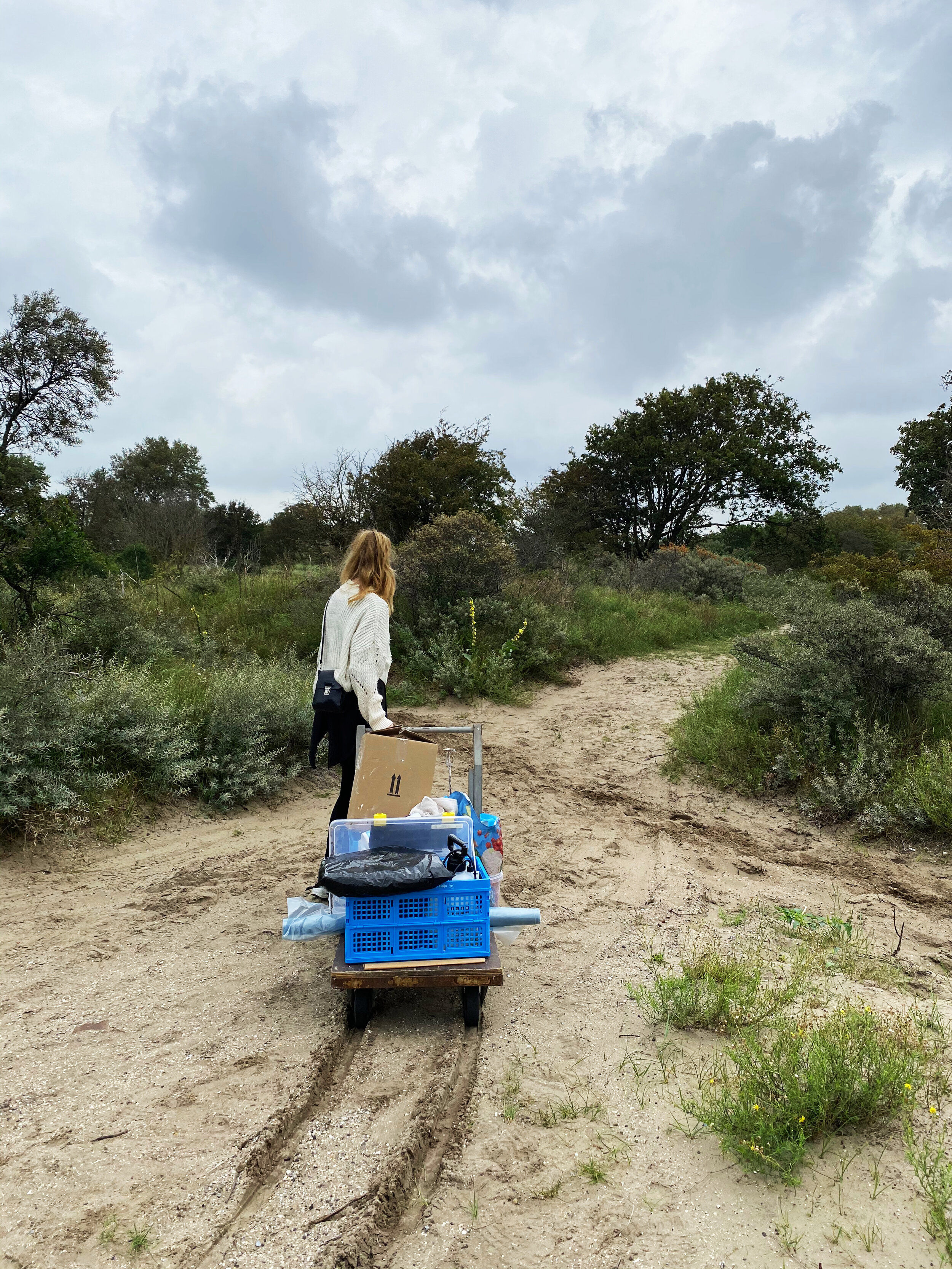Vanitasflora
In the work that Nynke Koster has made especially for the museum Beelden aan Zee's Kabinet, she explores the themes that characterize
her ouvre and she brings them together in a new whole. A colossal bowed construction proudly stands in the middle of the space. 'A grand
gesture' Nynke calls it. Indeed: the entire ceiling of the Kabinet appears to have fallen down completely. All the arches are still intact, the ribs that set apart this chapel-like space, untouched. Vanitasflora, the name of this work, is an ode to life and a 'memento mori' in one. The architectural element in this work of art is the entire ceiling, a piece of the museum's history: prior to the construction of the museum in 1994, this room was the wine cellar of
the nineteeth century Paviljoen de Witte, located on top of the dune. It is not only the memory of the past but it is also the bearer of the
future that we are now writing, according to Koster. On the arches lie a landscape of flowers and plants, following a particular pattern, a stylistic reference to the nineteenth-century ornamentation and in particular to the then so beloved ceiling roses. For this, Nynke does not use stylized flowers but casts of endangered vegetation that is to be found in the dunes around The Hague. In the work she makes tangible the problems related to the climate and the
nitrogen cycle. She has chosen the most exceptional and vulnerable examples that symbolize the nature that at some stage will no longer exist.
For Vanitasflora, Nynke has set about the work like a medieval craftswoman, working on the construction of the roof of a church: she creates arches of clay on a wooden framework. Clay is a durable but very fragile material that stands for the fragility of our environment: if we treat it heedlessly it will crack and crumble. The balance between mankind and nature is up to us, this work of art seems to remind us. It is a modern translation of the concept of 'memento mori’, particularly well known of the vanitas paintings: the seventeenth- century still lives with skull and (flickering) candle, in which the transience of this earthly life stands central and which had the objective of encouraging the observer to live a good life. However, Koster's Vanitas is warning us about the life of nature that is around us, and bout our collective responsibility for the future. This lies firstly in the hands of the artist, so Koster decided that that casting
itself should be surrounded with the greatest care respect for nature. To this end, Nynke has developed a technique with which she can make
casts of flowers and plants without having to harvest or damage them. Not only the image and the surface carry this message, but also the
technique and the material itself. In this way Koster brings together nature and architecture, the past, the present and the future that we are now writing.









